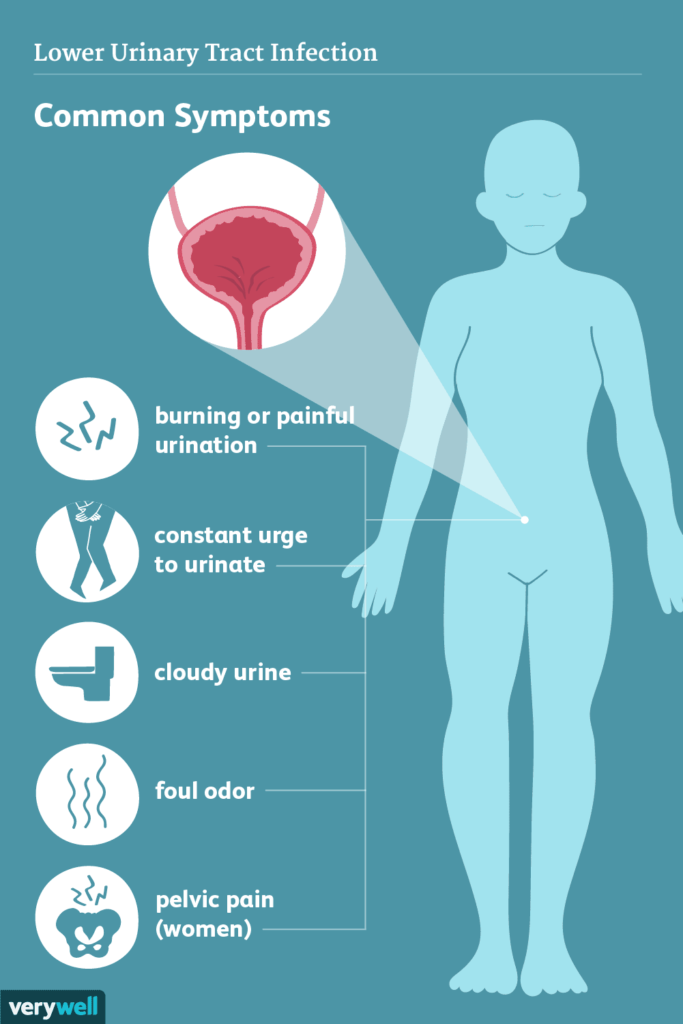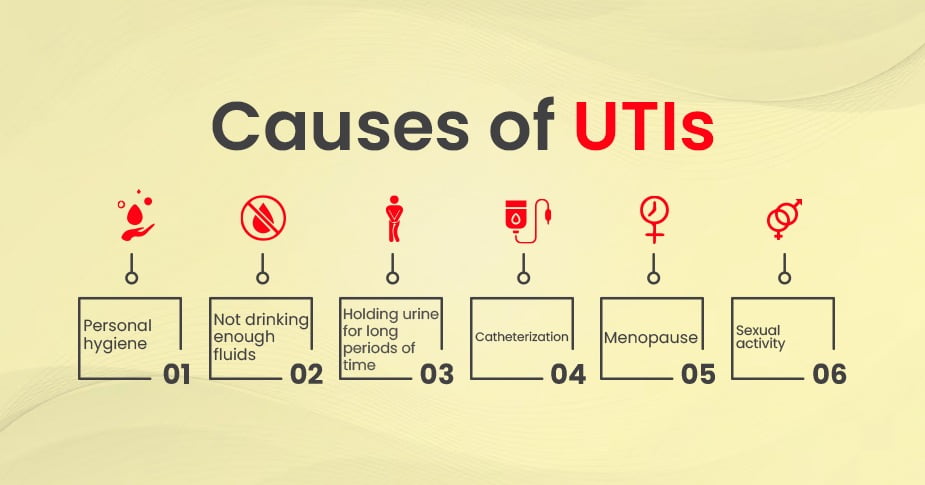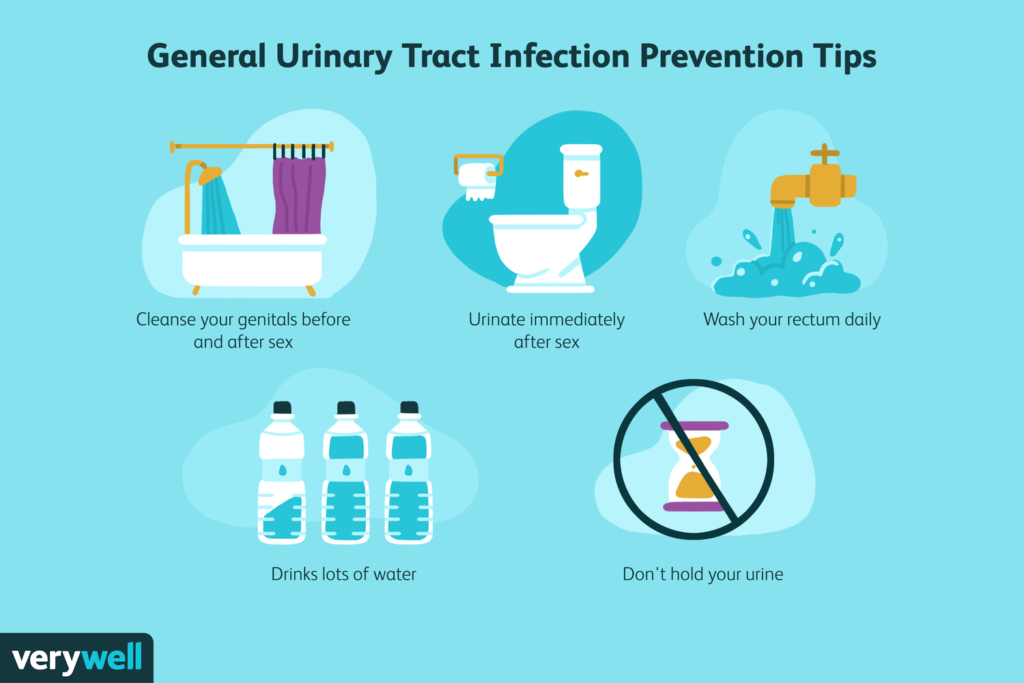Urinary Tract Infections: Everything You Need to Know in Malaysia
Table of Contents

In Malaysia, urinary tract infections (UTIs) are typically bacterial infections caused by E. coli, affecting both genders and all ages. Symptoms include a burning sensation during urination, frequent urges, and sometimes hematuria, which warrants immediate care. Risk factors encompass female gender, diabetes, and sexual activity. Untreated UTIs can escalate to kidney infections and chronic kidney disease. Adding fluids and cranberry juice may alleviate mild cases, though proper diagnosis through urinalysis is essential. Higher-risk individuals, such as pregnant women and the elderly, should seek prompt medical attention. Discover more about prevention, complications, and specialized care ahead.
Understanding UTIs
Understanding UTIs involves recognizing that they’re common bacterial infections in the urinary tract, primarily caused by E. coli. However, other microorganisms like mycoplasma and chlamydia can also be culprits.
It’s crucial to debunk UTI misconceptions and UTI myths that often cloud public understanding. For instance, many believe UTIs only affect women, but UTI in men and UTI in children are also significant concerns. Men, though less frequently affected than women due to their longer urethra, can still develop UTIs, particularly if they’ve urinary catheters or engage in certain sexual activities.
Children aren’t immune either; young boys and girls can suffer from UTIs, often presenting with symptoms like fever and irritability rather than the classic signs adults experience. Prompt medical attention is vital because neglected infections can escalate into severe kidney infections, leading to permanent damage.
Risk factors include being female, having diabetes, and engaging in sexual activity, all of which create an environment conducive to bacterial growth. Antibiotics remain the primary treatment, but understanding these risk factors and debunking myths can help in prevention and early intervention, ensuring better health outcomes.
Common Symptoms
Recognizing the common symptoms of UTIs is imperative for timely diagnosis and effective treatment. You might notice a frequent urge to urinate, often accompanied by a burning sensation. Even after emptying your bladder, you could still feel like you need to go.
Pain localized above the pubic bone is another telltale sign. Blood in the urine, known as hematuria, shouldn’t be ignored and often warrants immediate medical attention.
To confirm a UTI, healthcare providers typically recommend diagnostic tests such as a urinalysis or urine culture. These tests identify the presence of bacteria and help tailor the treatment plan.
While waiting for diagnostic results, some home remedies can offer relief. Drinking plenty of fluids, particularly water, helps flush out bacteria. Cranberry juice is often cited, though scientific support for its efficacy is mixed.
Ignoring these symptoms can lead to more severe conditions like kidney infections, which present with additional symptoms such as chills, fever, and lower back pain. Prompt medical attention is crucial to prevent serious complications.
Effective early intervention ensures that you address the infection before it escalates, safeguarding your long-term health.

Potential Complications
Failing to treat a urinary tract infection promptly can escalate into serious complications like kidney infections, which may result in permanent renal damage. Untreated UTIs can ascend from the bladder to the kidneys, causing pyelonephritis. This severe condition can lead to chronic kidney disease (CKD), a long term consequence that might require dialysis or a kidney transplant.
Moreover, recurrent UTIs significantly increase the risk of developing chronic kidney disease. For pregnant women, untreated UTIs can lead to serious risks such as premature delivery or low birth weight, which have profound implications for neonatal health.
In severe cases, an untreated UTI can progress to sepsis, a life-threatening systemic infection. Sepsis requires immediate medical intervention and can cause multiple organ failure, emphasizing the critical nature of early UTI management.
Older adults are particularly vulnerable; chronic UTIs in this population may heighten the risk of bladder cancer. The long term consequences of untreated UTIs underscore the importance of timely diagnosis and intervention.
You must prioritize early treatment to mitigate these serious risks and maintain overall health, particularly in susceptible groups such as the elderly and pregnant women.
Causes of UTIs
Addressing the causes of urinary tract infections (UTIs) involves identifying common pathogens like E. coli, Enterococcus, and Klebsiella, which typically originate from the gastrointestinal tract. These bacterial sources migrate from the rectal area to the urethra, ascending into the urinary tract and causing infection.
Your urinary tract’s natural defenses usually prevent these bacteria from causing harm, but several factors can compromise these defenses. One significant factor is obstruction risks. Obstructions, such as urinary tract calculi or kidney stones, can block urine flow and create a conducive environment for bacterial growth. Structural abnormalities or narrow urethras, often seen in men with recurrent infections, also heighten the risk of UTIs by impairing normal urine evacuation.
Additionally, certain conditions exacerbate your susceptibility to these infections. For instance, pregnancy can alter the urinary tract’s dynamics, increasing the risk of bacterial colonization and subsequent infection.
In older adults, chronic UTIs may signal underlying issues, such as bladder cancer, necessitating thorough clinical evaluation.

Risk Factors
Understanding the risk factors for urinary tract infections (UTIs) is essential for implementing effective prevention and management strategies. One can’t overlook the significant gender differences in UTI susceptibility. Women are particularly vulnerable due to anatomical factors; the female urethra is shorter and closer to the anus, making bacterial transference easier. This risk is heightened for sexually active women, as sexual intercourse can introduce bacteria into the urinary tract.
Another critical risk factor is catheter association. Urinary catheters, often used in hospitalized or immobile patients, provide a direct pathway for bacteria to enter the bladder. Catheter-associated UTIs (CAUTIs) are a significant concern in healthcare settings and require meticulous hygiene and timely removal to mitigate risks.
Individuals with diabetes also show increased UTI prevalence. Impaired immune function and elevated glucose levels in urine create an ideal environment for bacterial growth.
Given these risk factors, early medical intervention is crucial. Prompt diagnosis and antibiotic treatment can effectively manage UTIs, reducing the risk of complications.

Prevention Tips
To minimize the risk of urinary tract infections, adopting evidence-based prevention strategies is paramount. One fundamental aspect is understanding the hydration importance. Drinking plenty of water helps to flush out bacteria from the urinary tract, thereby reducing the likelihood of infection. Aim for at least eight glasses of water daily to maintain optimal urinary health.
Your bathroom habits play a critical role in preventing UTIs. Avoid holding in urine for extended periods as this can increase bacterial proliferation in the urinary tract. Make it a habit to urinate regularly, and be sure to empty your bladder completely each time.
Additionally, urinating before and after sexual intercourse can significantly reduce the risk by expelling any bacteria that may have entered the urethra during the activity.
Proper hygiene is crucial in UTI prevention. For women, always wipe from front to back after using the toilet to prevent the transfer of bacteria from the anal area to the urethra. Keep the genital area clean and dry, as a moist environment can promote bacterial growth.

Treatment Options
Antibiotics remain the cornerstone of UTI treatment, effectively targeting the specific bacteria responsible for the infection. You must complete the full course of antibiotics prescribed to prevent recurrence and combat antibiotic resistance. Common antibiotics include trimethoprim-sulfamethoxazole, nitrofurantoin, and fosfomycin.
In addition to antibiotics, pain relief medications like phenazopyridine can be prescribed to alleviate discomfort during urination. These medications don’t treat the infection but can significantly reduce symptoms.
For those seeking complementary approaches, herbal remedies like cranberry extract and D-mannose have shown some efficacy in preventing recurrent UTIs. These herbal treatments can be considered, especially for patients experiencing frequent infections. However, always consult your healthcare provider before starting any herbal remedies to ensure they won’t interact with prescribed medications.
Home remedies, such as increasing water intake and consuming probiotics, can also support UTI recovery and prevention. Water helps flush bacteria from your urinary tract, while probiotics maintain a healthy balance of good bacteria in your gut and urinary system.
If antibiotics are ineffective or if you experience chronic UTIs, specialized care and management strategies might be necessary. Always follow your healthcare provider’s advice for optimal treatment outcomes.

When to See a Doctor
Recognizing the need for medical intervention is crucial when dealing with urinary tract infections (UTIs), particularly in high-risk groups such as men, children, pregnant women, and post-surgical patients.
If you’re experiencing persistent symptoms after two days of treatment or recurrence after completing a course of antibiotics, it’s essential to seek a doctor consultation. These indicators suggest that the infection may not be responding to initial treatment and could require further medical evaluation.
Emergency situations warrant immediate attention. If you have a fever, nausea, confusion, dizziness, lower back pain, or notice blood in your urine, these symptoms could signify a more severe infection, such as pyelonephritis or sepsis. Immediate doctor consultation is necessary to prevent complications.
For women, particularly pregnant women, experiencing UTI symptoms or unusual discomfort, prompt medical consultation is vital. Pregnant women are at an increased risk for complications, and timely treatment is crucial for both maternal and fetal health.
Conclusion
To effectively manage and prevent urinary tract infections (UTIs) in Malaysia, recognize symptoms early and seek medical advice promptly.
Adopting preventive measures like proper hygiene, adequate hydration, and safe sexual practices can significantly reduce your risk.
If you experience recurrent UTIs or complications, consult a healthcare professional for personalized treatment.
By staying informed and proactive, you can mitigate potential health impacts and maintain optimal urinary tract health.
Always prioritize evidence-based strategies for the best outcomes.
Find a healthcare provider in Malaysia for urinary tract infections (UTIs) with kliniknearme.com.my

FAQ
Frequently Asked Questions
To treat a urinary tract infection in Malaysia, you’ll often start with antibiotics prescribed by healthcare professionals, tailored to the bacteria type.
Over-the-counter pain relief like phenazopyridine can help with symptoms.
Traditional remedies might include drinking cranberry juice or herbal teas, but always consult your doctor.
Severe cases may need hospitalization for intravenous antibiotics.
Additional imaging tests could be necessary to pinpoint underlying issues and ensure effective treatment.
If you have a urinary tract infection, seek medical advice promptly. Your doctor may prescribe antibiotics and pain relief medications.
Hydration is crucial; drink plenty of water to help flush out bacteria. Home remedies like cranberry juice may offer additional support, although evidence is mixed.
Avoid using vaginal douches and sprays. Always complete the full course of antibiotics to ensure the infection is fully treated and prevent recurrence.
You should look out for five warning signs of a bladder infection:
– Blood in the urine
– A persistent urge to urinate
– Pain or burning during urination
– Cloudy or strong-smelling urine
– Fever with lower abdominal pain
Symptoms duration varies, and recognizing risk factors like frequent sexual activity or a weakened immune system can help in early detection.
Always seek medical advice if these symptoms persist to avoid complications.
The fastest way a UTI can go away is by seeking medical attention for antibiotic options. Antibiotics start working within a day or two, quickly alleviating symptoms.
Complement this with home remedies like drinking plenty of water and urinating frequently to flush out bacteria. Over-the-counter pain relievers can also provide symptom relief.
Ensure you complete the full course of antibiotics to fully eradicate the infection.
